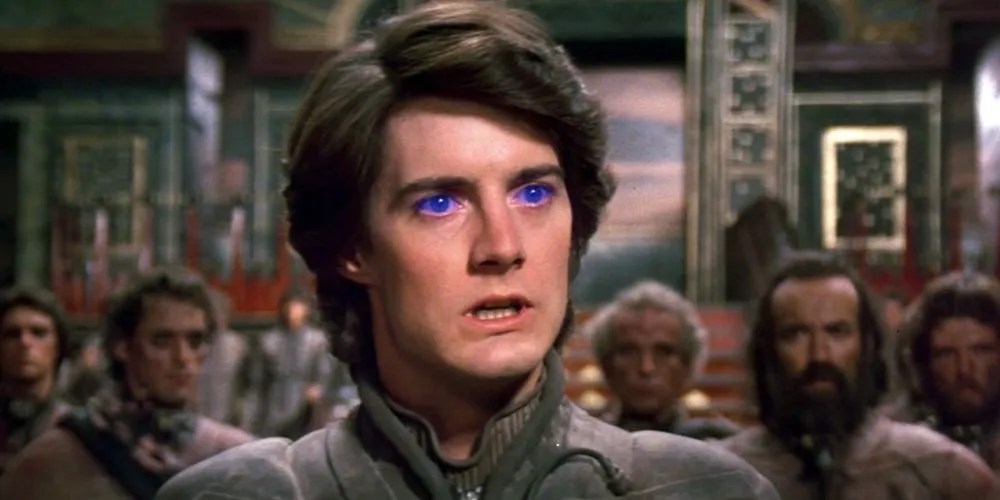Quick Links
Summary
When someone calls themselves aDunefan, chances are they’re referring to either the book or Denis Villeneuve’s film adaptation. It’s rare for David Lynch’s film adaptation ofDuneto even enter the conversation. While Lynch is revered for his surrealist classics, his 1984 film was rather too bizarre for its own good. Yet, in hindsight, it gets certain things right even if its director disowned the film.
Until 1984, adaptingFrank Herbert’s novelshad seemed impossible, with big names like Alejandro Jodorowsky and Ridley Scott stepping away from the project for various reasons. Lynch was the first person to bring the sci-fi classic to the big screen, but the results were unfortunate. The film was met with disappointment and is now considered a cautionary tale of an adaptation gone wrong, but it does have its share of redeeming qualities. Some aspects of his adaptation are arguably even better than the modern masterpiece.

David Lynch’s “More Is More” Approach
Lynch’sDunewas never successful, neither at its release nor as it aged, especially when compared to today’s far superior adaptation. However, the film isn’t as bad as pop culture would suggest. Rather, it’s an imperfect and ambitious movie with some genuinely good things about it.
The most obvious difference between the old and newDunefilms is on a visual level. Villeneuve’s take is sleek and minimalist, like his previous sci-fi outingBlade Runner 2049.Lynch, meanwhile, opts for a bolder, weirder look to tell his story. While Greig Fraser and his team’s work onDune: Part OneandPart Twowill likely be seen as timeless, Lynch’s version dares to go a little extra with lavish set designs and costumes, such as the imposing Fremen stillsuits. The outcome is an atmosphere of excess for Arrakis, to get that otherworldly feeling that the book demands.

Villeneuve also focuses more onPaul’s individual journey, whereas Lynch’s 1984 version dived into the political depths of its universe. Elements likethe Great Houses, the Spacing Guild, and the Emperor were given more emphasis, even at the cost of making the film feel disjointed and rushed. Though it might not have suited the medium, that lore is essential to Herbert’s original work.
Royalty Stands Out Better In The OlderDune
Lynch’sDunealso did a better job of capturing the imperial grandeur of the noble houses, particularly the Corrinos and the Atreides. The aristocratic vibe was spot on, andcharacters like Princess Irulanlooked and felt like royalty. Christopher Walken’s performance inDune: Part Twois more understated and fits in with the film’s overall tone, but José Ferrer’s Padishah Emperor in Lynch’s version had a more commanding aura about him.
Similarly, Lynch’s treatment ofDuke Leto and the Atreides familywas more lavish and formal, contrasting with Oscar Isaac’s stoic, “cool-dad” interpretation of the same character in Villeneuve’s adaptation. The older film attracted controversy for its seemingly homophobic take onBaron Harkonnen, but there’s no question about the villain’s grotesquerie.

Beyond characters and aesthetics, there are also interesting narrative differences to point out, especially since Villeneuve chose to take his time to tell the story across two films. Despite this, the new adaptation left out the Emperor’s subservience tothe Spacing Guild, an organization that holds a monopoly over space travel. The 1984 film included this aspect in true Lynchian style, with the Guild Navigator shown as a giant, mutated, reptilian creature. On the other hand, Villeneuve only hinted at the Guild’s presence through humanoid representatives. He later explained inan interview withEmpirewhy he chose to omit them:
We don’t see the Navigators in this first part […] I tried to keep all the space-traveling as mysterious as possible, like almost bringing some kind of mysticism or sacred relationship with that part of the movie. Everything involving space is just evocated and very mysterious.

Lynch’sDuneDeserves A Second Look
The inclusion of the Spacing Guild in the olderDunedidn’t just up the film’s weirdness. It gave the story more political weight by showing how even anall-powerful Emperor like Shaddam IVhas to submit to the Guild’s demands. Interstellar travel became more interesting, especially with the space-folding sequence where the Navigator creates a wormhole, which is almost like a ceremonial initiation. However, some of Lynch’s more questionable decisions, such as turning theBene Gesserit’s voice powersinto physical Weirding Modules, make it harder to defend the film’s stronger creative choices.
Other technical aspects that deserve praise in Lynch’sDuneinclude the sound design and background score. While they differ significantly from the modern take, they are good enough to stand their own ground over time. Certain choices, like the use of voice-over to convey a character’s internal monologues, can feel cluttered to some, but it’s a risk worth taking. Overall, the 1984 film deserves a second chance, especially as viewers have started to embrace the “campiness” of older, once underappreciated films. Of course, anyDuneadaptation with Sting as Feyd-Rautha and featuring space pugs simply cannot be ignored.
